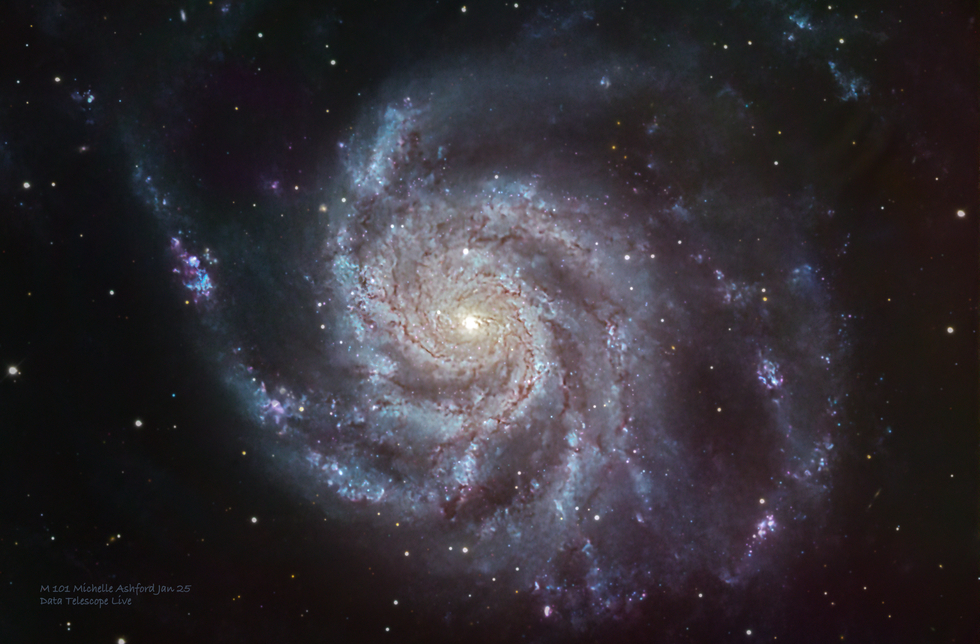Northern Pinwheel Galaxy
Northern Pinwheel Galaxy
M101, known as the Pinwheel Galaxy, is a face on, unbarred, and counterclockwise spiral galaxy located 21 million light years from Earth in the constellation of Ursa Major. It was discovered by Pierre Méchain in 1781 and was communicated that year to Charles Messier, who verified its position from inclusion in the Messier Catalogue.
The giant spiral disk of stars, dust and gas is 170,000 light-years across — nearly twice the diameter of our galaxy. M101 is estimated to contain at least one trillion stars.
The galaxy has an unusually high number of H II regions, where new stars form, many of these regions are bright and large, ionised by many extremely luminous and hot young stars. Observations in 1991 led to the discovery of 1,264 H II regions in M101. Three of these were bright enough to get their own designations in the New General Catalogue: NGC 5461, NGC 5462 and NGC 5471.
The Pinwheel Galaxy appears symmetric in images that only reveal its central region, but is really quite asymmetrical as a result of interactions with smaller companion galaxies. The galaxy’s core is displaced from the centre, likely as a result of a collision in the recent past.
This image is a combination of datasets which also include the recently discovered type II supernova (designated SN2023ixf) by amateur astronomer Koichi Itagaki.
The giant spiral disk of stars, dust and gas is 170,000 light-years across — nearly twice the diameter of our galaxy. M101 is estimated to contain at least one trillion stars.
The galaxy has an unusually high number of H II regions, where new stars form, many of these regions are bright and large, ionised by many extremely luminous and hot young stars. Observations in 1991 led to the discovery of 1,264 H II regions in M101. Three of these were bright enough to get their own designations in the New General Catalogue: NGC 5461, NGC 5462 and NGC 5471.
The Pinwheel Galaxy appears symmetric in images that only reveal its central region, but is really quite asymmetrical as a result of interactions with smaller companion galaxies. The galaxy’s core is displaced from the centre, likely as a result of a collision in the recent past.
This image is a combination of datasets which also include the recently discovered type II supernova (designated SN2023ixf) by amateur astronomer Koichi Itagaki.
SPECIFICATIONS
Telescope
SPA-2 Officina Stellare ProRC 700
Camera
QHY 600M
Location
Spain
Date of observation
7 Datasets June-Sept 23
Filters
LRGB
Processing
Pixinsight, Blur Exterminator, Affinity, Star Exterminator, Topax De-Noise/Sharpen


